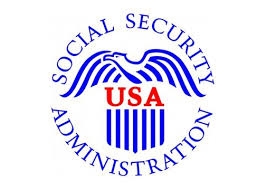Immigration News & Updates         eNewsletter
        eNewsletter
 POSTING DATE: JANUARY 9, 2017
Learn More About:
Immigration News & Updates eNewsletter ©  2011  - 2017Â
For questions about U.S. Residency, Green Cards and Immigration Visas, Visit our Website at: www.ImmigrateToday.com or  call our office at: (954) 382-5378
Check Out This Cool Stuff For Immigrants....
Immigration
Questions & Answers
Question: I immigrated to the U.S. from Venezuela in 2003 and got my American Citizenship in 2010. I filed for my 20 year old daughter in 2009 when I was still a Green Card holder. She just got married this last December when I went to visit her for the holidays and is 3 months pregnant. Iâd like to know if the immigration case I filed for her when she was still single is good or is it cancelled because she just got married? I want to know if I need to hire you to file a new immigration now to include her husband and child? We are very confused at this point. Thanks for your help.
This Week's Immigration NewsÂ
National Visa Center Now AcceptsÂ
Copies of Signed Affidavits of Support
Under a new policy, the National Visa Center (NVC) has announced that it will now begin accepting copies of signed Affidavits of Support, in cases where the original signed âinkâ version cannot be provided.
Until now, Sponsors were required to provide the originally signed Form I-864 (and I-864A, I-864W, and I-864EZ) to the NVC during the Immigration visa process. Beginning January 1, 2017, the NVC will accept photocopies and scanned versions of signed Forms I-864 and associated documents. Please note that the form must still be signed; typed names and electronic signatures will not be accepted. However, the USCIS continues to require original âinkâ signatures on all I-864 related forms.
Answer:Â Donât worry, the Immigration Family petition (I-130) you filed for your daughter in 2009 is still valid, since she got married after you became a U.S. Citizen. When you filed the initial I-130 to sponsor your adult daughter, her case was in the F2B category for unmarried sons and daughters of U.S. Residents. Once you became a U.S. Citizen in 2010, your daughterâs category changed from F2B to the F1 category for unmarried sons & daughters of U.S. Citizens. Now that she is married, her eligibility will simply move from the F1 down to the F3 category for married sons & daughters of U.S. Citizens, which includes spouses & minor children under age 21. In contrast, if you had been a U.S. Resident when your daughter got married, that would have invalidated the I-130 petition and you would have needed to file a new petition once you became a U.S. Citizen. The reason for this is that under immigration regulations, there is no immigration category for married sons or daughters of U.S. Residents.Â
Now that your daughter is married, it will take her much longer to immigrate, but, at least her husband and child(ren) can immigrate along with her. The National Visa Center (NVC), the government agency which takes care of preparing cases for consular processing, is not aware that your daughter is now married. Therefore, in order to convert from the F1 (category for unmarried sons & daughters of U.S. Citizens) to the F3 (category for married sons & daughters of U.S. Citizens), you can call the NVC at: (603) 334-0700, then send a copy of your daughterâs marriage certificate, birth certificate for her husband: National Visa Center, Attn: DR, 31 Rochester Ave. Suite 100, Portsmouth, NH 03801-2914 with a letter containing the NVC case number, your name/ birth date and the same for your daughter.Â
Alternatively, you can wait until the NVC contacts you to initiate the consular processing for daughterâs F1 case, then provide them with her new married status at that time. Your daughterâs Priority Date is 2009. Right now, there are Immigrant Visas in the F3 category for 2005, that means there is another 4+ years for her and her family to wait.Â
You can always visit the State Department's Visa Bulletin website, to see the current Visa Priority Dates. We can assist you with NVC notification and the preparation of your daughters NVC case when the time comes. Please call me at (954) 382-5378 if you have any questions.
Before Trump Take Office â Itâs Important To Understand Which Family Members Can Be Sponsored By Whom And How LongÂ
It Will Take For Them To Immigrate To the U.S.
Now that Trump will be taking office on January 20th, itâs more important than ever for Immigrants and sponsors to educate themselves about basic Immigration Issues.Â
I often get questions from U.S. Citizens and U.S. Residents alike about which family members they are eligible to sponsor, when they are allowed to initiate the process, how many family members can be sponsored at one time and how long it will be before their loved ones can immigrate to the U.S..
Here's how it works:
U.S. Citizens are eligible to sponsor:
1) Spouses, Minor Children and Parents (called "Immediate Relatives")Â
2) Adult Single Sons & Daughters (and their minor children) F1,Â
3) Adult Married Sons & Daughters (and their spouses and minor children) called F3 Â
4) Brothers & Sisters (and their spouses and minor children) called F4.
U.S. Residents are eligible to sponsor:Â
1) Spouses and Minor Children called F2A andÂ
2) Adult Single Sons & Daughters (and their minor children) called F2B.Â
Note that U.S. Residents cannot sponsor their Parents, Adult Married Sons & Daughters or their Brothers & Sisters. If a child who has been sponsored by a Resident marries before the parent becomes a U.S. Citizen, the Immigration case is automatically cancelled, even if the child later divorces.
Waiting Times For Family Members in all Countries (except Mexico/India & Philippines where waiting times are often much longer):Â
1) Immediate Relatives (Spouses, Minor Children and Parents of U.S. Citizens), there is no waiting line, just USCIS and consular processing time (approx 8-12 months).Â
2)Â F1Â - Adult Single Sons & Daughters of U.S. Citizens, the waiting line is approx 6+ years,Â
3)Â F3Â -Adult Married Sons & Daughters of U.S. Citizens, the waiting line is approx 10+ years,Â
4)Â F4Â -Brothers & Sisters of U.S. Citizens , the waiting line is approx 12+ years,Â
5)Â F2AÂ -Spouses and Minor Children of U.S. Residents, the waiting line is approx 1 1/2 years andÂ
6)Â F2BÂ -Adult Single Sons & Daughters of U.S. Residents, the waiting line is approx 6+ years.
Under current Immigration regulations, once an Immigrant receives U.S. Residency, (even Conditional Residency through marriage), and similarly when a Resident becomes Naturalized, they are eligible to sponsor any and all family members in any of the qualifying categories. There is no limit on the number of family members which can be sponsored at the same time. For instance, a U.S. Citizen can sponsor an adult, single daughter, a married son and 3 sisters and 2 brothers all at the same time. However, due to the difference in waiting times, each family member be immigrating at different times, depending upon the Family Immigration category. Trump and Congressional Immigration reforms in the future may limit the type and amount of family members allowed to immigrate to the U.S., but for now, the number is limitless, so donât wait until it is too late.Â
Finally, in most cases, family members in the F-1 â F4 categories above must be in legal Immigration status (unexpired I-94) in order be eligible to adjust status to residency in the U.S.. Those filing for adjustment who are not in legal status will be denied and likely put in deportation under a Trump presidency, so get professional advice before filing any residency case! Waivers are available which allow family members who are out of status to obtain residency through consular processing, but not through adjustment of status in the U.S.
You can learn more about immigrating through family member and Waivers by visiting our website at: www.Immigratetoday.com or by calling our office at: 954-382-5378.
Immigration How To:
How Do I Know If I Need To Change My Social Security Immigration Records?
Updating Immigration Status In Social Security Administration Records          Â
Immigrants often receive a Social Security Card for many reasons, for instance while working on OPT after college graduation, while working on a work visa such as an H-1B, etc. However, those types of Social Security cards require USCIS authorization in order to work. Therefore, once an immigrant becomes a U.S. Resident, Social Security Administration Records need to be updated so that the Social Security records and card allow unrestricted employment, without the need for USCIS authorization.Â
Similarly, once a U.S. Resident Naturalizes and becomes a U.S. Citizen, Social Security records need to be updated to reflect the new Citizenship in order to later be eligible for certain Social Security benefits.
To change your records, go to your nearest Social Security card and take your current Social Security card, Naturalization Certificate, U.S. Residency card, Driverâs License (if applicable) or valid Passport.Â
The Officer will change your records in the system to reflect your new status and order a new Social Security card which does not have any restrictions. Learn more about how to update your records: Tips from the Social Security Administration
Helpful Immigration Tips You Can Use...
What Happens At Your Naturalization Ceremony?
Once your Application for Naturalization is approved, the USCIS puts your case in the queue to be scheduled for your Oath of Allegiance which takes place at your naturalization ceremony. This taking of your Oath of Allegiance complete the process of becoming a U.S. citizen.
Understanding the types of Oath Ceremonies:
There are two kinds of Oath of Allegiance ceremonies, one, is a judicial ceremony, where the court administers the Oath of Allegiance for Residents who have requested a name change and the regular administrative ceremony, during which the USCIS administers the Oath of Allegiance.
So whatâs going to happen at your naturalization ceremony?
1. Receive Your Naturalization Ceremony Notice to Take the Oath of Allegiance
While some Immigrants who request it may be able to participate in a naturalization ceremony on the same day as their naturalization interview, many Residents must wait for the USCIS mail them a notice with the date, time, and location of their scheduled naturalization ceremony, called a Notice of Naturalization Oath Ceremony (Form â N-445). Those who cannot attend the scheduled naturalization ceremony must return the notice to their local USCIS office, along with a letter requesting a new date and explaining why they are not able to attend the scheduled naturalization ceremony. Residents who fail to show up for their naturalization ceremony without having requested a rescheduling may receive a denial of their naturalization case.
2. Complete Form N-445, Notice of Naturalization Oath Ceremony before checking in at the Ceremony
Residents should complete Form N-445, Notice of Naturalization Oath Ceremony before arriving at the ceremony, prior to check in with USCIS. During check-in, a USCIS officer will review your responses to the questionnaire.
3. Surrender of your Permanent Resident Card (Green Card)Â
Residents who are becoming U.S. Citizens must surrender their Permanent Resident Cards to the USCIS at the time they check- in for the naturalization ceremony. Those who have lost their cards can receive a waiver.Â
4. Taking the Oath of Allegiance to the United States
A Resident is not a U.S. citizen until he/she takes the Oath of Allegiance to the United States during the naturalization ceremony. After the Oath, new U.S Citizens receive their Certificate of Naturalization.
5. Notes about the Certificate of Naturalization
New U.S Citizens should carefully review the Certificate of Naturalization for accuracy while still at the ceremony. Any inaccuracies must be brought to the attention of the USCIS before leaving the ceremony. Unless or until you apply for your U.S. Passport, your Certificate of Naturalization is your official proof of your U.S. Citizenship. Those who lose their Certificate of Naturalization must request a replacement by filing Form N-565, Application for Replacement Naturalization/Citizenship Document and paying the $345 USCIS filing fee. The waiting time for a replacement can be lengthy.
downloading the form.Â
6. Time to apply for Your U.S. Passport
Once you receive your Certificate of Naturalization, you can immediately apply for a U.S. passport. You will receive an application for a U.S. passport at your naturalization ceremony, called the âU.S. Citizenship Welcome Packetâ or you can go online to the U.S. Passport office
7. Time to Register to Vote!
Now that you are a U.S. Citizen, it is your right and privilege to vote. You can register to vote at certain locations in your community, which may include post offices, motor vehicle offices, county boards of election, and offices of your state Secretary of State. You can read more about registering to vote by reading the government publication: âA Voterâs Guide to Federal Elections."
8. Final Step: Update your Social Security Record
After you become a U.S. Citizen, you will need to notify the Social Security Administration (SSA) to update your Social Security record. You can find your local Social Security office by calling 1-800-772-1213 or by visiting: www.socialsecurity.gov. You can go to your local SSA office about ten days after your ceremony to give time for the SSA to be able to access your new status in the USCIS records. Be sure to take your Certificate of Naturalization or U.S. passport with you. Good luck!Â












